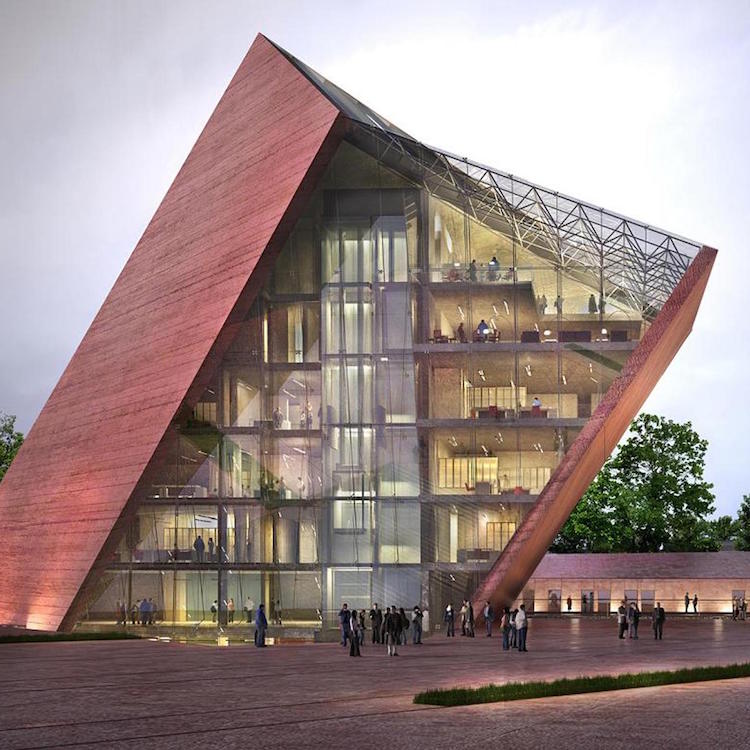GDANSK, Poland — Jetting out of the earth like the result of a large seismic eruption, Studio Architektoniczne Kwadrat‘s design for the Museum of the Second World War showcases a towering prism rising from the ground serving as a city icon symbolizing catastrophe and the surviving hope. The choice of Gdańsk as the site of the museum is significant as it’s not only where the war broke out, but it’s was also where solidarity emerged during the post-war division of the world, ArchDaily writes.
It rises symbolically from the ground, led by light, bold, Simple, and naked, symbolically placed in the geometry of the shipyard. It links the ground – its gloom, chill, and imprint of the Past, with the skies – hope, freshness, and Future. In this ingenious design, a rational vision of a public facility meets the wealth of history. It rings full sound, telling a story hard to chew for any generation, the story we must never forget. The attractive body of the building cumulates emotions, portrays the terror of war without depriving us of hope. It does not leave its interpreters buried in the gloom of the difficult topic.
The design is the culmination of an international design competition to create the modern institution, which strives to create a multidisciplinary presentation of the greatest cataclysm of the 20th century. ArchDaily writes, the building seamlessly merges with the narrative of the surrounding neighborhood mimicking the shape of nearby cargo lifts.
The minimalist means of architectural expression proposed by the authors gracefully blend the modern idea of the building with the historic background. In its Design, the innovative, huge-scale project makes use of the unique air of the city and transforms it in a modern manner. The colour and texture proposed in the design smoothly blend with the colours of Gdańsk giving the museum the power to pass the test of the 21.c century.
As a public space, the modern building serves an immense range of functions including offering a large space for permanent exhibitions, while leaving smaller ones for future revolving displays.
The subject of contention as the new populist government determined that the museum was “not patriotic enough,” The Huffington Post writes, stating the museum does not present a full picture of Polish heroism during the war.
Images courtesy Studio Architektoniczne Kwadrat.
Do you love or loathe this work of contemporary architecture? Let us know in the comments.









Add your valued opinion to this post.